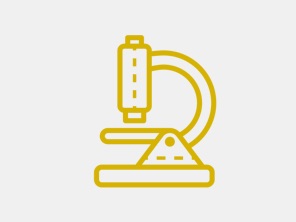Listen to this article.
Since 2012, donation possibilities for babies have expanded, and currently, there is more potential for donation than ever before in the United States. Although each particular case is unique, and each potential donation has various criteria that must be met, donation is a very viable option for babies who have received a prenatal diagnosis of a life-limiting condition.
There are two main types of donation possibilities: Donation for transplant and donation for research. There are a few other possibilities, including whole body donation, blood and skin samples, and participation in surveys.

DONATION FOR TRANSPLANT
Although options for transplant donation are limited, they do exist. Currently, as long as specific criteria are met, babies are capable of donating heart valves (a tissue donation), occasionally corneas (also tissue), and kidneys (an organ donation). The most common of these potential donations are heart valves. Typically, for a heart valve donation to occur, the baby would need to meet a 6- to 8-pound weight requirement, a minimum gestation age (often 36 weeks), have a known time of death (and in some situations, be born alive), and have the recovery surgery take place in a specified time frame after death has occurred.

DONATION FOR RESEARCH
Donation for research has a wide variety of potential donations. Currently, as long as there is a current research need and specific criteria are met, babies are capable of donating liver, lung, heart, kidney, pancreas, thymus (organ donations), skin samples, corneas, retinas, and some musculoskeletal tissue (tissue donation). Often, a baby who donates to research is capable of donating multiple organs and/or tissues. In order to donate to research, a baby must be a minimum gestation age (often a minimum of 28-34 weeks if mom goes into labor naturally, or a minimum of 37 weeks if a mother is being induced), have a known time of death (and in some situations, be born alive), and have a recovery surgery take place in a specific time frame after death has occurred. There is typically no minimum weight requirement when donating to research, which is very helpful, specifically for babies with various birth defects. Often, families are also able to learn basic information about what type of research will be done with their donation.

WHOLE BODY DONATION
Whole-body donation is currently a limited option in the United States. There are only a few placement openings each year. A baby must also meet specific requirements, including a minimal gestation age (typically 32 weeks gestation) and a size requirement (varies depending on current need). A baby participating in a whole-body donation will be utilized by the researchers between two and eight months. Once research is finished, a family can request their baby’s ashes to be returned.
OTHER IMPORTANT INFORMATION
It is important to note that with any type of donation, a recovery surgery will only take place after the baby has, in fact, died and the heart is no longer beating. This is important for parents to realize, so they know that donation will not cause any physical pain to their baby. Often, a recovery can take place several hours after death (anywhere from 30 minutes to 18 hours after death, depending on the type of donation). Also, for tissue donation for transplant and organ/tissue donation for research, medical interventions such as intubation or life support will not need to occur.
If a family makes the choice to participate in donation, it is also good to know that they can request to have their baby brought back to them for more bonding time after the recovery surgery is finished if desired. This is important to insure donation does not limit a family’s ability to have time with their baby.
It is important to remember that each potential donation is different, and each Organ Procurement Organization (OPO) has different requirements that will need to be met. There is no way to guarantee donation as an outcome, but if you are interested in the option of donation, it is best to contact your local OPO to learn specifics for your situation.
To learn more about donation options, including the ones listed above, as well as other various options, you can visit Purposeful Gift (www.purposefulgift.com). Purposeful Gift is a 501(c)3 non-profit organization that increases awareness about neonatal organ, eye, tissue, and whole-body donation. The Purposeful Gift website provides accurate information, answers frequently asked questions, provides useful resources and guides families through the donation process. Purposeful Gift can also act as a parent advocate or liaison for a family pursuing neonatal donation.
This information has been created by Purposeful Gift and prepared for Carrying To Term, Inc. (www.carryingtoterm.org). Purposeful Gift maintains the copyright of this information

